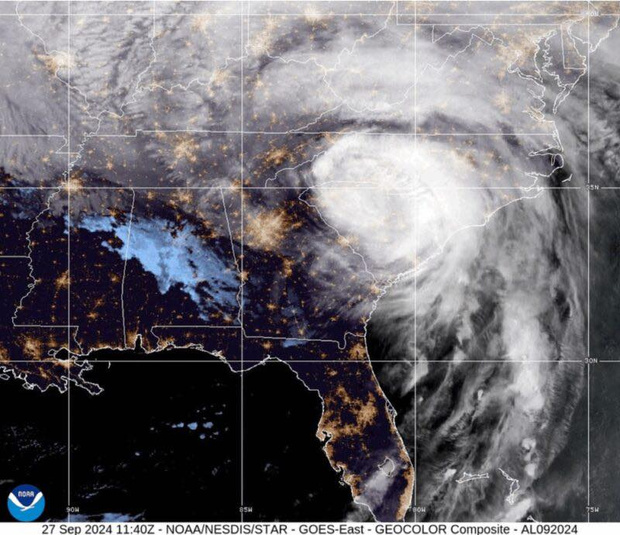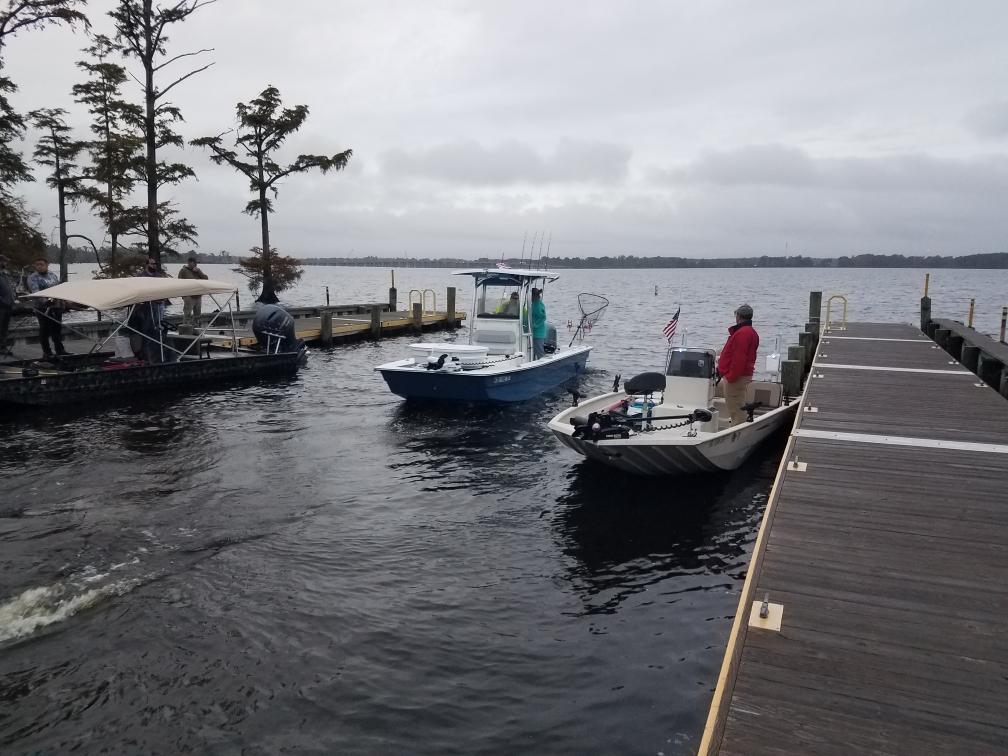Commercial fishermen react to MFC mullet decision

While many local commercial fishermen prefer day-of-the-week closures as opposed to daily trip limits, which the North Carolina Marine Fisheries Commission (MFC) voted to approve as its preferred fishery management for striped mullet, they don’t see the need for mullet regulations.
“It’s a no-win situation for us one way, shape, or form,” said Mike Langowski, a commercial mullet fisherman in Frisco. “So, I’ve got to live with whatever it is they come up with.”
Many commercial fishermen in North Carolina are not against the regulation of their industry, because they need a healthy, viable stock to continue to make money.
However, these fishermen don’t see the mullet regulations as necessary, because they are seeing many mullet in Pamlico Sound. The data from the stock assessment ended in 2019 and did not include more recent years, and the fishermen don’t believe the Department of Marine Fisheries (DMF) collects independent survey data efficiently.
“Nobody said don’t manage the fishery, don’t reduce it at all, but a 30-something percent reduction is a significant reduction especially when you’re seeing a bunch of positive signs in the stock,” said Glenn Skinner, a commercial mullet fisherman and the executive director of North Carolina Fisheries Association, an advocacy group for commercial fishermen established in 1952.
At its February business meeting in New Bern, the MFC unanimously voted to close commercial striped mullet fishing on Saturday and Sunday from Jan. 1 to Sept. 30 and on Saturday, Sunday, and Monday from Oct. 1 to Dec. 31 as part of its preferred fishery management for mullet, the Island Free Press reported.
Before the decision goes into effect, the Department of Environmental Quality’s secretary and legislative bodies will review the new regulations, and the MFC will hold a final vote in May.
The day-of-the-week closures will close the mullet fishery for more than 110 days of the year and will reduce mullet harvest by 34.9 percent, according to DMF data.
After a stock assessment ending in 2019 from the DMF found mullet is overfished and overfishing is occurring, the DMF recommended a 33 percent reduction in total harvest to end overfishing in two years and end the overfished status in 10 years, the Island Free Press reported.
In December, the DMF recommended a 50-pound daily trip limit for January for commercial fishermen, a 500-pound daily trip limit from Feb. 1 to Oct. 15, no daily trip limit for roe season from Oct. 16 to Nov. 15, a 50-pound daily trip limit from Nov. 16 to the end of the year, and a 50-pound daily trip limit on Saturday and Sunday throughout the year, the Island Free Press reported.
After public comment held during Northern, Southern, and Finfish Advisory Committees earlier this year, the DMF changed its recommended restrictions to day-of-the-week closures, said Jeff Dobbs, a biologist for the DMF.

The day-of-the-week closures are preferable to the daily pound limit, because the restrictions are simpler and fairer to fishermen across the state, Skinner said.
“Although none of us really wanted anything until they updated the stock assessment, at least this is something that is simple, easy for all fishermen to understand, and it affects every individual in the fishery the exact same way,” Skinner said.
Members of the MFC were concerned that day-of-the-week closures would not bring 21.3 percent to 35.4 percent harvest reduction the DMF is targeting, because the amount of mullet commercial fishermen can harvest on open days is not limited.
Targeting commercial fishing effort by reducing the number of days mullet can be harvested will only force commercial fishermen to go out more on open days and will not meet the targeted reduction, said Tom Roller, a member of the MFC.
“Effort will not be reduced at the level we hope it will to get to the necessary reductions to end overfishing,” Roller said during the MFC meeting in February.
However, the MFC needed a supermajority of votes to vote against the DMF recommendations and did not want the earlier mullet amendment, which closed the season in November and December, to remain in place, the Island Free Press reported.
The DMF and MFC work within the Department of Environmental Quality, with the DMF collecting data, writing stock assessments, and recommending regulatory measures, while the MFC votes on regulations.
While the day-of-the-week closures are preferable to daily trip limits, they pose other problems. If mullet fishing is closed on Saturday and Sunday and the weather is unsuitable for fishing on Monday and Tuesday, that leaves only three days for mullet fishermen to make money that week.
During public comment at the MFC meeting in February, fishermen, tackle shop owners, and Dare County Commissioner Steve House expressed concerns that the data, which the stock assessment is based on, is four years old and outdated.
The data for that stock assessment ended in 2019, when commercial fishermen landed more than 1.3 million pounds of mullet. Since then, commercial landings have increased, with more than 2.7 million pounds of mullet landed in 2022, according to DMF data.
“[The DMF] are also seeing increased catches, which leads us to believe, even if that stock assessment was accurate at the time, it’s four years behind and this stock has dramatically increased,” Skinner said.
Mullet harvest was low in 2019, in part, because roe mullet buyers weren’t paying a high price, said John Machie, a commercial mullet fisherman in Wanchese, who’s been fishing for more than 40 years.
In the fall, mullet usually fetch a higher price because they are spawning and the roe is sought for food.
With more recent data showing an increased stock, many fishermen question whether harsh reductions are necessary, Skinner said.
“This is all about getting management on an unmanaged fishery,” Skinner said.
Commercial fishermen, who are on the water every day they can, are also seeing an increase in mullet in the Pamlico Sound.
“I’ve seen more mullet this year in the wintertime than I have in a long, long time,” said Langowski, who moved to Hatteras Island in 1966, and has more than 60 years of experience in commercial fishing.
Since 1994, the DMF has collected data for stock assessments using the North Carolina Trip Ticket Program, which requires commercial fishermen to report fish caught, total weight of each species, unit price, gear used, and location of catch. Commercial fishermen must complete a trip ticket after each successful trip.
The DMF also collects independent data through gill net surveys to determine the abundance of many fish species.
Determining abundance in fish species is difficult. The DMF employees compare this to trying to count all the trees in the forest, but the trees are invisible and move constantly.
In the Hatteras Island area of the Pamlico Sound, technicians at the DMF set a length of net, parallel to shore, with mesh ranging from 2.5 inches to 10 inches to catch a variety of fish in a randomly selected area.
For the latest mullet stock assessment, the DMF used data from independent surveys conducted in shallow water – less than six feet – from August to December. The data showed an increase in mullet abundance from 2015 to 2021 with a substantial decline in 2022, according to DMF data.
The DMF uses stratified random sampling to eliminate bias. The DMF isn’t trying to target fish. Instead, it is looking to sample an area. As a result, the independent surveys catch fewer fish than commercial fishermen, Dobbs said.
“This is not something where we’re just making up how we want to assess,” Dobbs said. “This is something with over 200 years of backup in science. This is the gold standard for collecting data of an entire population.”
The data DMF collects is not reliable for mullet, because the DMF doesn’t set in mullet habitats throughout the year, said Skinner, who fishes commercially for mullet during mullet roe season in the Carteret County area.
Mike Hooper, a commercial fisherman and owner of Kinnakeet Seafood in Avon, would like the independent surveys to reflect the abundance of mullet that commercial fishermen see, he said.
“[The surveys] can’t be that random,” Hooper said.
Independent surveyors shouldn’t use anchored gill nets to sample for mullet, said Machie, who’s primarily mullet fished for the last decade after regulations effectively closed the commercial flounder fishery. Circle setting, or strike netting, in which fishermen set a circle of net around a school of fish, is more efficient for catching mullet.
 Machie also recommended that DMF use drones to collect data on schools of mullet, complete mullet stock assessments every other year, and institute a yearly catch cap for commercial fishermen on mullet.
Machie also recommended that DMF use drones to collect data on schools of mullet, complete mullet stock assessments every other year, and institute a yearly catch cap for commercial fishermen on mullet.
Without a yearly limit on the amount of mullet commercial fishermen are allowed to catch, the DMF will have to institute more regulations when the new regulations don’t lower the harvest by 35 percent, he said.
These new regulations will take away the demand for mullet, Lankgowski said. Once the demand goes away, the price drops, and commercial mullet fishermen will be out of business.
In 2022, commercial fishermen in North Carolina made more than $2.1 million dollars selling mullet, according to DMF data.
Machie will have to find an additional source of income to complement his mullet fishing, which is his primary source of income year-round, he said.
“It’s not going to hurt the people that do it part-time, but it will hurt me,” Machie said.
Many commercial fishermen make a living selling mullet directly to bait and tackle shops. Bait and tackle shop owners are worried that with the recommended mullet regulations they will not be able to stock mullet every day for recreational fishermen and charter boats.
“This affects all of us who are just trying to feed our families,” Hooper said.























